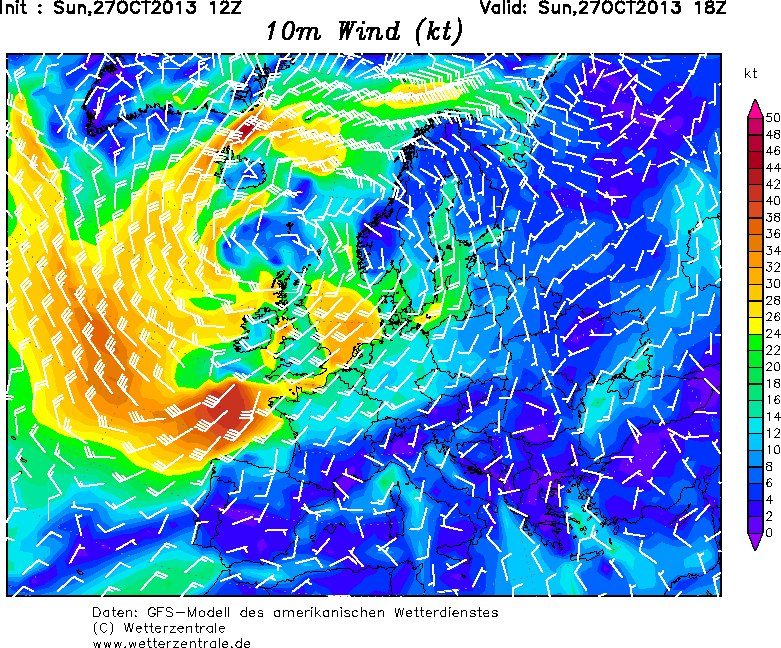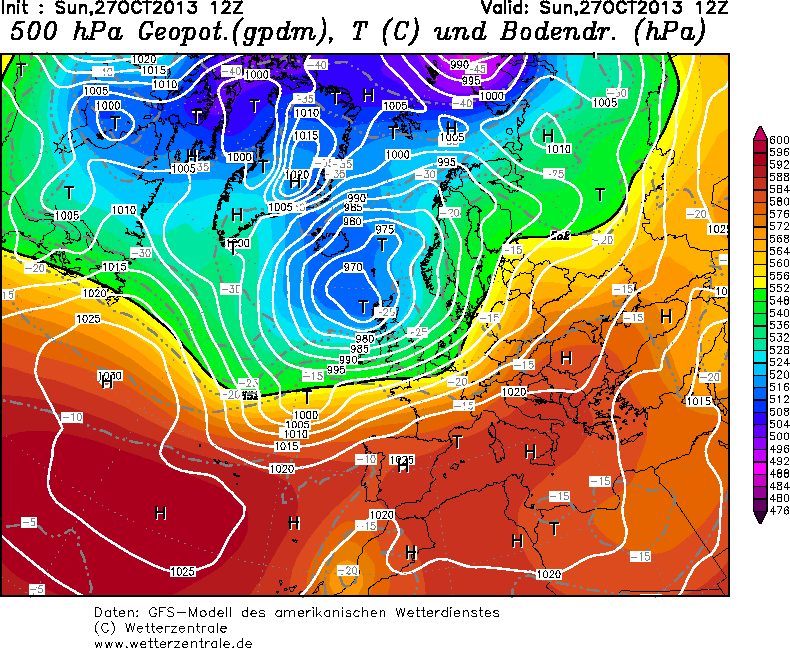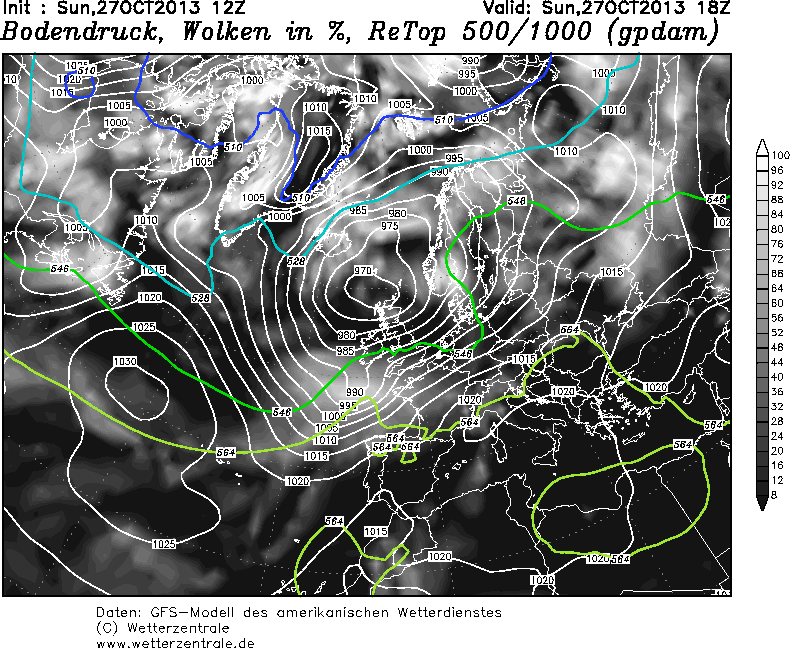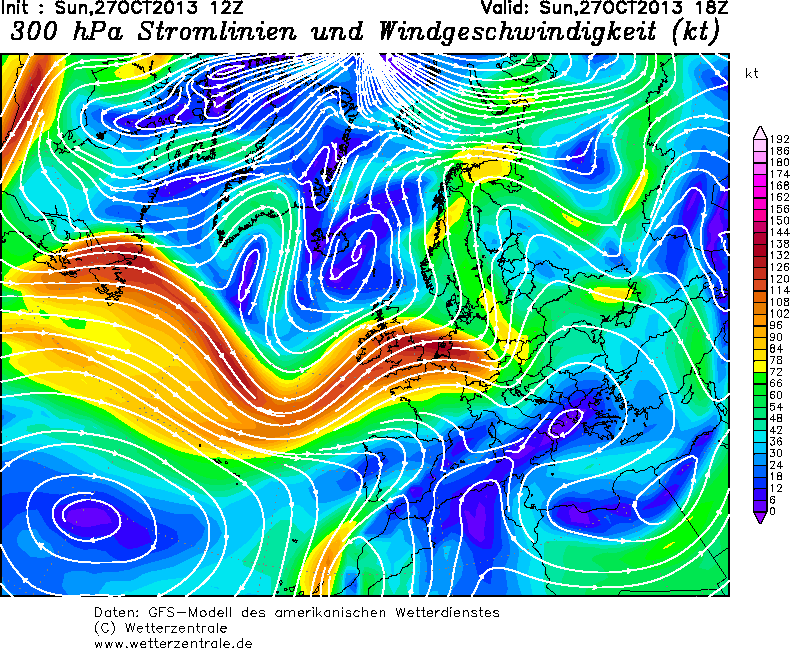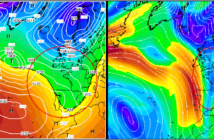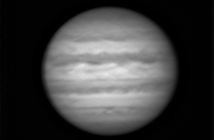There are numerous ressources on the web to forecast the weather. Here is my use of the Global Forecast System (GFS) for Astronomy. These are previsions for western Europe but you can find weather maps for any part of the world you are living in !
You can accessGFS on TopKarten, a german site where you can find weather maps up to 15 days. Here are the ones I like most…
Ground pressure (500 hPa, Bodendruck)
This maps locates the position of high-pressures (H) and low-pressures (T). The code of colors corresponds to the temperature of air masses at 500 hPa and is not useful here. This kind of map is especially interesting for mid-term forecast, to evaluate the probability to get clear skies in the coming days. You may want to load the 10 days maps forecast.
Cloud cover (Mittl. Wolken)
Now this is already more interesting. The GFS simulation of cloud cover is very nice:
The jet-stream (300 hPa Stromlinien/Wind)
And now this is the bad guy. The jet-stream is a strong high-altitude air current that circulates between tropicals HP and temperates low-pressures. It is hardly compatible with good seeing… you must know where it is when you plan to observe!
The color code is easy to read: the redder, the stronger. You’d rather find yourself in locations under blue to violet colors ;). Although green might still allow good images.
Wind at ground level (10m Wind)
Here is again an interesting map. Ground wind does have an influence on the seeing. It must be weak (the color code is identical to that of the jet-stream: it must be blue or violet); but its direction is important as well. From my experience of different locations in western France (including Paris), the best ground wind was coming from the ocean, even if there have been exceptions.
